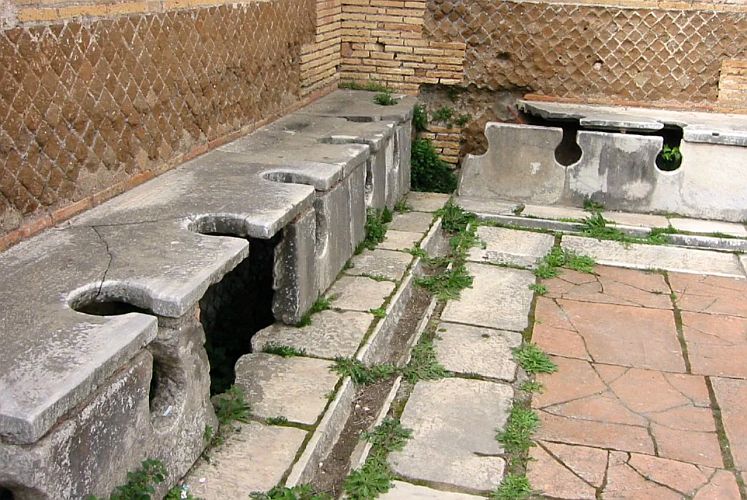How the Ancient Romans Went to the Bathroom [View all]
'A new book (The Other Dark Matter: The Science and Business of Turning Waste into Wealth and Health) by journalist Lina Zeldovich traces the management of human waste—and underscores poop’s potential as a valuable resource'
“I live my life in the gutter,” says Ann Olga Koloski-Ostrow with a chuckle. An anthropologist at Brandeis University, she considers her “official” title the Queen of Latrines. For the past 25 years, she has taken that label literally, spending much of her time in ancient Roman gutters. “There’s a lot you can find out about a culture when you look at how they managed their toilets,” Koloski-Ostrow says. “That’s why I study it.”
The word “latrine,” or latrina in Latin, was used to describe a private toilet in someone’s home, usually constructed over a cesspit. Public toilets were called foricae. They were often attached to public baths, whose water was used to flush down the filth. Because the Roman Empire lasted for 2,000 years and stretched from Africa to the British Isles, Roman toilet attitudes varied geographically and over time. Generally speaking, however, the Romans had fewer inhibitions than people today. They were reasonably content sitting in close quarters—after all, Roman theater seats were rather close, too, about 12 inches apart. And they were similarly at ease when taking communal dumps.
Though they look advanced for an ancient civilization, Roman public toilets were far from glamorous. The white marble seats gleaming in the sun may look clean now, but that was hardly the case when these facilities were operational. They had low roofs and tiny windows that let in little light. People sometimes missed the holes, so the floors and seats were often soiled. The air stunk. “Think about it—how often does someone come and wipe off that marble?” Koloski-Ostrow asks. In fact, she thinks the facilities were so unwelcoming that the empire’s elite only used them under great duress.
At the height of its power, Rome had to clean up after about a million people. An average adult produces about a pound of poo a day, so a 500-ton pile of feces is a mind-boggling image. While Roman farmers understood the waste’s fertilizing value and put some of it back into the fields, the city couldn’t recycle it fast enough. To flush that much excrement out of the city daily, one needs a truly massive system.
https://www.smithsonianmag.com/history/how-the-ancient-romans-went-to-the-bathroom-180979056/

